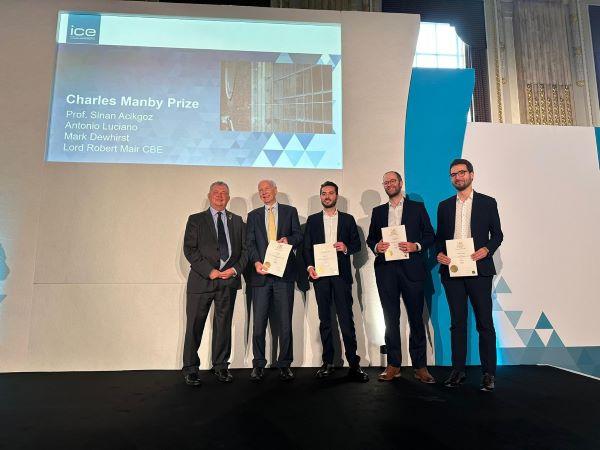
Submitted by Dr Fiorella Del... on Mon, 23/10/2023 - 16:58
The paper “Innovative monitoring of the response of a heritage masonry building to nearby tunnelling in London Clay”, by Professor Sinan Acikgoz, Antonio Luciano, Mark Dewhirst, Matthew J. Dejong and Professor Lord Robert Mair, has received this year’s Charles Manby Prize at the ICE Award Ceremony 2023 for best paper.
The Manby Prize, one of ICE’s publishing awards, was established in 1857 by Charles Manby, then Secretary of ICE, for the best paper covering Information and Communication Technology (ICT), Geographic Information Systems (GIS) and Building Information Modelling (BIM) in the broadest sense.
The result that we discuss in this paper highlighted research questions that need to be answered to enable safe underground construction under historic urban areas; these questions have motivated my research efforts ever since. The project owes its success to effective collaborations with colleagues from the Cambridge Centre for Smart Infrastructure and Construction, University of Naples Federico II, Geocisa and Transport for London. Sinan Acikgoz, Associate Professor of Engineering Science, University of Oxford
The award-winning paper discusses innovative displacement and strain monitoring techniques for heritage masonry structures during underground construction. Ground movements during underground excavations are crucial in urban tunnel construction, as they impact existing structures. To manage these impacts, sparse point measurements are collected around structures to assess whether displacements exceed design threshold values. Heritage structures are particularly vulnerable to damage, necessitating detailed surveying and monitoring. Laser scanning and fibre optic sensing data can provide higher spatial resolution than conventional methods, enabling better interpretation of building response to ground movements.
The paper details the use of laser scan displacement monitoring and fibre optic strain sensing to monitor ground movements and geometric distortions in a listed masonry church in London Clay. The techniques were applied to the building facades, tower and painted dome, where conventional displacement monitoring was not feasible. The paper highlights the impact of underground construction activities on the church and the proposed sensing techniques provide new data on the influence of pre-existing damage and tunnel advance on soil-structure interaction.
Professor Sinan Acikgoz, a former CSIC Postdoctoral Research Associate stated: “The result that we discuss in this paper highlighted research questions that need to be answered to enable safe underground construction under historic urban areas; these questions have motivated my research efforts ever since. The project owes its success to effective collaborations with colleagues from the Cambridge Centre for Smart Infrastructure and Construction, University of Naples Federico II, Geocisa and Transport for London.”
